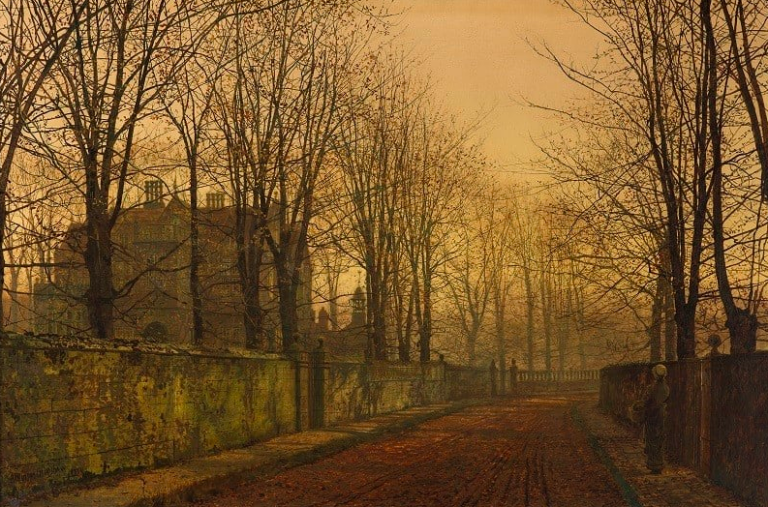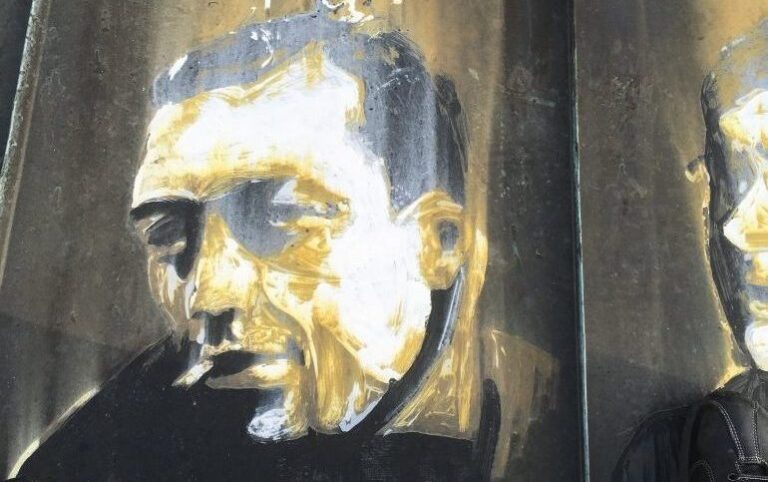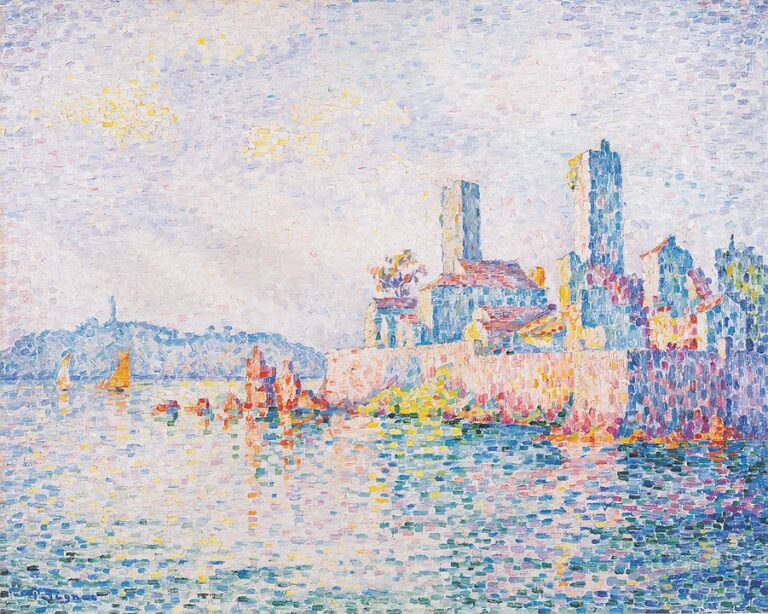Becoming an Art Monster

I never wanted to be an art monster, not in the way that the narrator of Dept. of Speculation (2014), by Jenny Offill, describes it. “My plan was to never get married,” she says. “I was going to be an art monster instead. Women almost never become art monsters because art monsters only concern themselves with art, never mundane things. Nabokov didn’t even fold his own umbrella. Vera licked his stamps for him.” My plan, in contrast, was always to get married, have children, and make art—all of which I have done. In fact, I had the audacity to marry an artist. He takes care of our umbrellas, replacing them when they break, and I make sure we have stamps on hand for when we need them. Both of us cook (I more than he), wash dishes (he more than I), and tend to the needs of our children. Nevertheless, although I never wanted to be an art monster, or a monster of any kind, I became one anyway—but not in the way Offill’s narrator imagines.
Becoming a monster, a monster as Caroline Hagood envisions, was likely inevitable. In Weird Girls: Writing the Art Monster (2022), a book of ninety brief essays, Hagood reflects on the connections between women, monsters, and creativity by way of the Wicked Witch of the West, the Frankenstein monster and his “bride,” Lady Gaga (“Mother Monster”) and her fans (the “Little Monsters”), and Ursula, the villain of Disney’s The Little Mermaid, among others, in addition of course to Jenny Offill’s narrator. The book is one that Hagood was once advised to write secretly, because, she says, “I had all these ‘monster things’ I wanted to write about that I absolutely didn’t feel I could confess to publicly”; its tone is casual and confiding, like that of a fellow artist mom whom you have met for coffee and gossip, and with whom the conversation is full of quotations from books by other women: Hélène Cixous, Virginia Woolf, Chris Kraus, Carmen Maria Machado, Julia Kristeva, Kate Zambreno, and so on.
As she begins to draw the connection between women, monsters, and creativity, Hagood quotes Cixous: “Who, surprised and horrified by the fantastic tumult of her drives…hasn’t accused herself of being a monster? Who, feeling a funny desire stirring inside her (to sing, to write, to dare to speak, in short, to bring out something new) hasn’t thought she was sick?” I have felt that sickness. As I experience it, inspiration is not purely of the spirit; insight and new language sometimes come to me along with a churning in my gut. Hagood recounts a time when, after seeing and reading Frankenstein (1818) for the first time, she came to a similarly corporeal understanding of her creativity:
I remember sitting at that desk and staring at my hand until I went into a kind of trance, thinking how easily it could be taken apart, but also of all the radically new things that could be made from its disparate parts. I felt this to be a metaphor for how I saw creativity and writing in particular. This was my first realization that ‘reality,’ ‘time,’ ‘space,’ ‘knowledge,’ and all those good things we learned about in school weren’t set in stone but more like floating islands. They could all be rearranged, remade.
I envy Hagood for coming to this insight at such a young age—she was ten years old then, she says, writing her first novel “with pencil in a Marble composition notebook”—and for finding freedom rather than terror at perceiving the insubstantiality of the self. I envy her, too, for arriving in that trance-like mental space, and for writing in that space, which eludes me. Usually, the best I can do, with my anxiety and churning gut, is write a few dozen words at a time, maybe one or two hundred, and then go to bed. As I used to tell my students, back when I taught creative writing, I try to delegate as much of the work of writing as possible to my unconscious mind. After a night of mostly forgotten dreams, I find myself able to write the next hundred words or more.
That I can trust some of the work of writing to a part of myself that is so deeply interior that I do not know it is a kind of monstrousness. “We humans are the real haunted houses,” writes Hagood, citing an epigraph—from Jacqui Germain—of Machado’s Her Body and Other Parties (2017): “My body is a haunted / house that I am lost in.” But this monstrousness isn’t what I’m talking about when I say that I became an art monster. What I have in mind is the inverse of Offill’s art monster—the artist who becomes monstrous from not creating.
Woolf writes about that monstrousness in A Room of One’s Own (1929): “When, however, one reads of a witch being ducked, of a woman possessed by devils, of a wise woman selling herbs…we are on the track of a lost novelist, a suppressed poet, of some mute and inglorious Jane Austen, some Emily Brontë who dashed her brains out on the moor or mopped and mowed about the highways crazed with the torture that her gift had put her to.” Hagood quotes this passage when explaining why she believed that the Wicked Witch of the West—a witch scorned in a wizard’s world—was a writer, despite the fact the most she writes in the movie is the words surrender Dorothy in smoke with her broomstick above Emerald City. I don’t remember much about The Wizard of Oz in general or the Wicked Witch of the West specifically; I have only a possibly inaccurate impression of her as cranky and screechy, which is how I become when I put aside my own work and squelch the desire to create in order to make time for something else, something more urgently demanding—schoolwork, or a job, or, more recently, both.
I read most of Hagood’s book on my phone one evening in mid-December, on the long commute between my home in Flatbush, Brooklyn, and my graduate school class in Flushing, Queens. I remember standing on the platform, waiting for the LIRR train to arrive and take me from Jamaica to downtown Brooklyn, and realizing that the next time I stood on this platform my entire life would be different: my capstone project would be done and I would have only one class remaining to finish my degree. I could hardly imagine what that difference would feel like. It was as though I were underwater, having held my breath for so long that I had forgotten what it is like to breathe. This experience got mixed up in my imagination with Hagood’s chapters on The Little Mermaid, in which she celebrates Ursula, the sea witch who “belts out the phenomenal ‘Poor Unfortunate Souls’ in that unforgettable husky Pat Carroll half-growl, shaking that lavish animated bosom in our faces, bursting the screen with the sheer fact of herself.” But I was thinking of the monstrousness of Ariel—the fish out of water. No wonder she had to give up her voice. She was trying to live in a place where she couldn’t even breathe.
Of course pretending to be a regular girl is monstrous—as monstrous as not writing, and as monstrous as being a mother who takes some time to herself to write, as I am doing now. Of course Hagood, attuned to the transgressions necessitated by life in this world as an artist, woman, and mother, sees the monstrousness of everything she does—not only writing (“in gym socks and cat pajaamas, pockets full of candy wrappers, my son informing me that I just misspelled ‘pajamas’”), but also walking in Brooklyn with her kids in a double stroller, just another (as Charles Baudelaire described the flâneur) “werewolf roaming restlessly in the social wilderness.”


